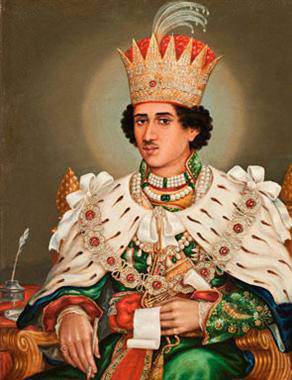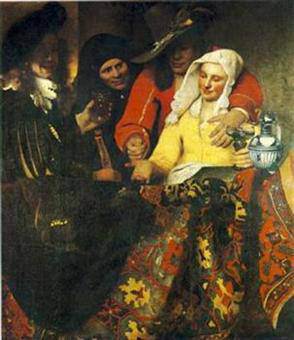
Muhammad Azam
Portrait of Nasir al-Din Haidar
c. 1830
India’s Fabled City: The Art of Courtly Lucknow at the LACMA The Los Angeles County Museum of Art (LACMA) presents India’s Fabled City: The Art of Courtly Lucknow—the first major international exhibition devoted to the cosmopolitan culture of the northern Indian court of Lucknow and the refined artistic production of the city’s multiethnic residents and artists.
On view from December 12, 2010 through February 27, 2011
]]>
Source: The Los Angeles County Museum of Art (LACMA
The exhibition will include almost 200 artworks: European oil paintings, watercolors, and prints; Indian opaquewatercolor paintings generally made for albums, vintage photography, textiles, and garments, and a range of decorative art objects including metalwork, glassware, weaponry, and jewelry. Organized by Stephen Markel, LACMA curator of South & Southeast Asian art and department head, and Tushara Bindu Gude, associate curator, The Art of Courtly Lucknow will not only present the unique artistic traditions of Lucknow, but will also provide a framework for understanding the history of this extraordinary region and the nature of India’s colonial history and memory.
Lucknow was the capital of Awadh (a province in the Mughal Empire locatedin the present-day Indian state of Uttar Pradesh), and has becomeidentified with the broader region and culture. From the mid-eighteenthcentury until the establishment of formal British rule in India in 1858,Lucknow overshadowed Delhi—the capital of the Mughal dynasty—to become thecultural center of northern India. Indian artists, poets, and courtiersflocked to Awadh seeking security and patronage, as Delhi suffered anextended period of unrest beginning in 1739. European artists, travelersand political agents were also soon lured to the region, seduced by talesof the wealth, opulence, and the generosity of Lucknow’s rulers (nawabs)and by the beauty of the city itself. The dynamic interaction betweenIndians and Europeans, the interplay between their respective tastes andtraditions, and the hybrid lives led by many of Lucknow’s residents areexplored in the exhibition and accompanying publication.
The Art of Courtly Lucknow examines this interaction against the broadernarrative of India’s colonial history. Following the Indian Uprising of1857(also known as the Great Mutiny, Rebellion, or First Indian War ofIndependence) and the consolidation of British power in India, Lucknow’sprestige decreased dramatically. It continued, however, to be an importantcenter for the production of luxury objects and a key destination forEuropean and Indian visitors. British and Indian artworks of the latenineteenth century indicate the different ways in which the image andmemory of Lucknow were deployed. Many works chart the loss of diversityand the fixing of national identities and aspirations, but some alsorecall Lucknow’s past glory. In the popular culture of modern-day India,Lucknow has an ambiguous history. It evokes nostalgia for a lost past butis also presented as a source of national and cultural pride.
Follow us on:


